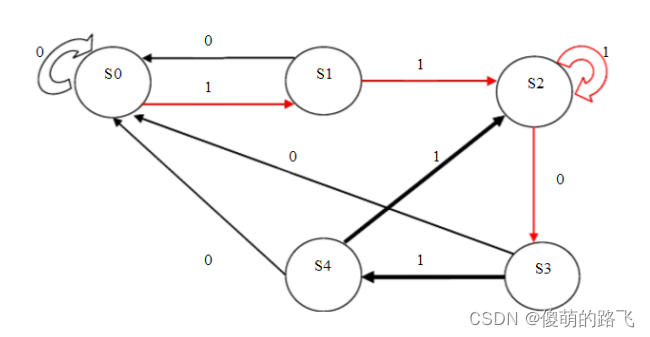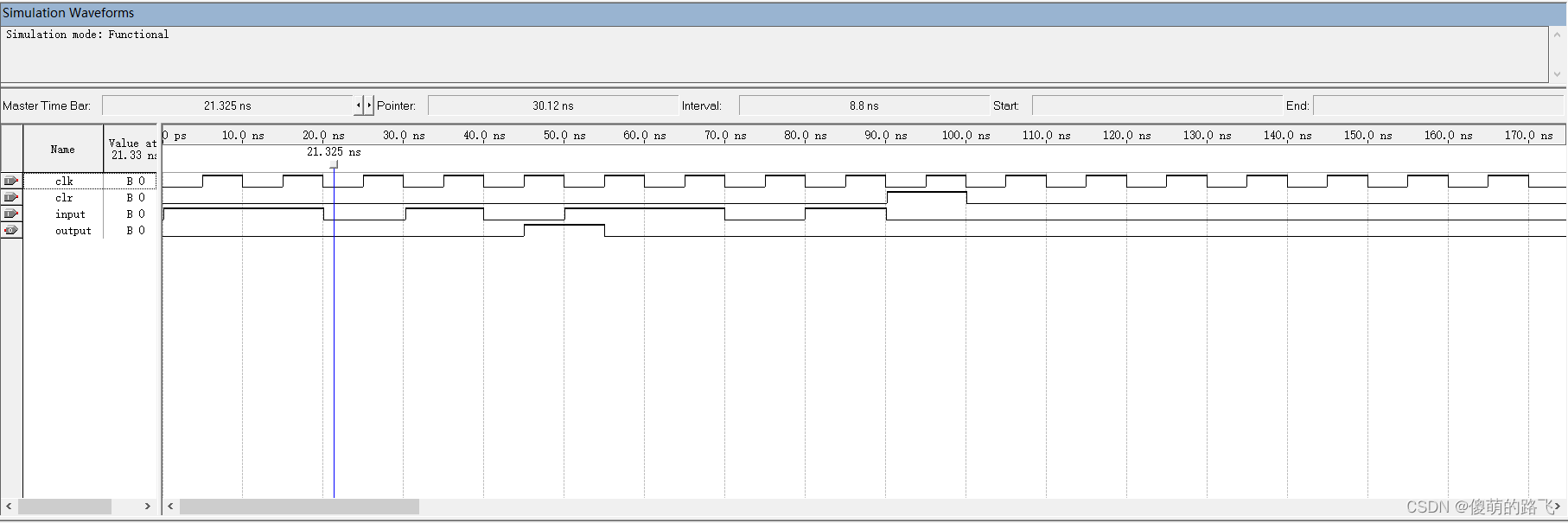目的:采用有限状态机设计序列检测器,实现串行序列11010的检测器。
设计思想:使用有限状态机,定义五个状态即s0,s1,s2,s3,s4,实现序列11010的检测。在状态机中,每个状态的下一个状态都有两个转移方向,画出状态转移图,如下。

程序
library ieee;
use ieee.std_logic_1164.all;
use ieee.std_logic_unsigned.all;
entity state is
port(
clk,clr :in std_logic; --clk时钟脉冲,clr回到初始状态
input :in std_logic; --input序列信号输入
output :out std_logic --output序列检测输出
);
end state;
architecture behave of state is
type state_type is(st0,st1,st2,st3,st4); --定义状态位s0,s1,s2,s3,s4)
signal s :std_logic_vector(4 downto 0);
signal q :state_type;
signal flag :integer range 0 to 1; --标志位
begin
s <= "11010";
process(clk)
begin
if(clr = '1') then
flag <= 0;
q <= st0;
elsif (clk'event and clk = '1') then
case q is
when st0 => if(input = s(4)) then q <= st1;flag <= 1;else q <= st0;flag <= 0;end if;
when st1 => if(input = s(3)) then q <= st2;flag <= 1;else q <= st0;flag <= 0;end if;
when st2 => if(input = s(2)) then q <= st3;flag <= 1;else q <= st2;flag <= 0;end if;
when st3 => if(input = s(1)) then q <= st4;flag <= 1;else q <= st0;flag <= 0;end if;
when st4 => if(input = s(0)) then q <= st0;flag <= 1;else q <= st2;flag <= 0;end if;
when others => q <= st0;flag <= 0;
end case;
end if;
end process;
process(q,flag)
begin
if(q = st0 and flag = 1) then
output <= '1';
else
output <= '0';
end if;
end process;
end behave;
波形仿真图






 本文介绍了如何使用VHDL设计一个序列检测器,专注于检测11010的串行序列。通过阐述有限状态机的概念,详细描述了五个状态s0到s4的转换,并提供了程序代码及波形仿真的结果。
本文介绍了如何使用VHDL设计一个序列检测器,专注于检测11010的串行序列。通过阐述有限状态机的概念,详细描述了五个状态s0到s4的转换,并提供了程序代码及波形仿真的结果。


















 1395
1395

 被折叠的 条评论
为什么被折叠?
被折叠的 条评论
为什么被折叠?










